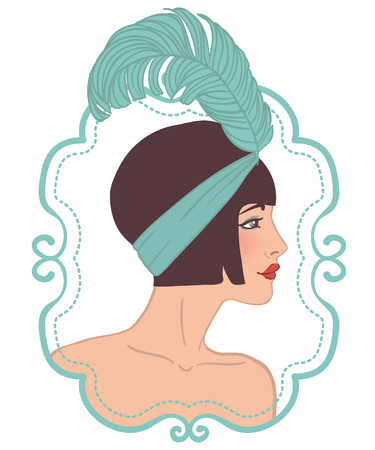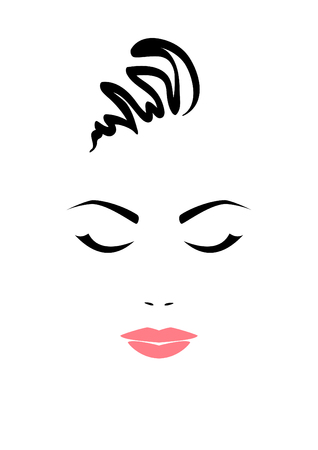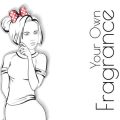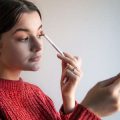Building a Simple Haircare Routine
Your twenties are all about embracing independence, self-discovery, and yes—staying on top of your hair game despite a packed schedule. The first do of haircare in your 20s is to build a routine thats both effective and easy to stick with. Start by identifying your hair type (straight, wavy, curly, or coily) and scalp condition—this will help you choose the right products and avoid overcomplicating things. Stick to the basics: cleanse with a gentle, sulfate-free shampoo, condition to lock in moisture, and use a lightweight leave-in product for added protection. Less is more; don’t fall into the trap of using every trending product on social media. Instead, prioritize quality ingredients like argan oil for hydration or keratin for strengthening if your hair is prone to breakage. For busy mornings, dry shampoo can be a lifesaver—just remember not to rely on it every day as buildup can clog follicles. Create a weekly schedule that includes washing two to three times per week depending on your hair’s needs, and set aside time for occasional deep conditioning or scalp treatments. Streamlining your regimen ensures your hair gets the care it needs without eating up your precious free time.
2. Choosing the Right Ingredients for Your Hair Type
Your 20s are the perfect time to get serious about understanding what your hair really needs. With so many products crowding the shelves, it can be overwhelming to pick the right ones—especially when ingredient lists read like a science experiment. The secret? Learn how to decode labels and choose ingredients that directly address common scalp and hair issues people in their 20s often face, like oiliness, dryness, early signs of thinning, or color damage.
Why Ingredients Matter
Not all shampoos, conditioners, or styling products are created equal. Many mainstream options contain harsh sulfates or silicones that might leave your hair looking good short-term but can cause buildup or irritation over time. Instead, look for targeted ingredients that match your unique hair goals.
Common Scalp & Hair Concerns in Your 20s
| Concern | Do Look For | Dont Use |
|---|---|---|
| Oily Scalp | Tea Tree Oil, Witch Hazel, Salicylic Acid | Heavy oils, waxes, non-water-soluble silicones |
| Dry Ends | Argan Oil, Shea Butter, Glycerin | Sulfates, Alcohol-based stylers |
| Color-Treated Hair | Coconut Oil, Hydrolyzed Keratin, UV Filters | Sulfates, Clarifying agents too often |
| Thinning or Weak Hair | Biotin, Caffeine, Niacinamide | Strong hold gels, Excessive heat protectants with alcohol |
| Frizz & Humidity Issues | Aloe Vera, Jojoba Oil, Silk Proteins | Sodium Chloride (salt), Harsh detergents |
How to Read Product Labels Like a Pro
#1: Ingredients are listed in order of concentration. The first five ingredients usually make up the bulk of the formula. If an ingredient is touted on the front label but appears at the end of the list, its impact may be minimal.
#2: Watch out for marketing buzzwords. Terms like “natural,” “clean,” or “organic” aren’t always regulated in the U.S.—so flip that bottle over and check the actual content.
#3: Patch test new products. Even if an ingredient is popular or recommended for your concern, everyone’s scalp reacts differently. Try a small amount behind your ear before full application.
Pro Tip:
If you’re struggling with persistent scalp issues like dandruff or excessive shedding in your 20s, don’t hesitate to consult a dermatologist. Sometimes underlying health factors need professional attention!

3. Common Mistakes to Avoid in Your 20s
Your 20s are a time for self-expression, but some popular haircare habits can actually do more harm than good. Let’s break down the most common mistakes—and why they can lead to lasting hair damage.
Over-Styling with Heat Tools
Frequent use of flat irons, curling wands, and blow dryers might help you achieve Instagram-worthy looks, but high heat can strip your hair of natural moisture and weaken the cuticle layer. This leads to split ends, frizz, and overall dryness. If you love styling, try using a heat protectant spray and keep your tools at the lowest effective temperature.
Chemical Treatments Gone Too Far
From bleaching for balayage highlights to experimenting with perms or relaxers, chemical treatments are tempting when you’re eager for a new look. However, over-processing breaks down protein bonds in your hair shaft, making strands brittle and prone to breakage. Limit major chemical changes and always consult a licensed professional who understands how to minimize damage.
Skipping Regular Trims
It’s easy to forget about trims when you’re growing your hair out, but skipping cuts allows split ends to travel up the strand—resulting in more breakage and less length retention over time. Aim to trim every 8-12 weeks to keep ends healthy and maintain shape.
Other Habits That Harm Hair Health
- Tight Hairstyles: Constant ponytails or buns can stress your roots and cause traction alopecia.
- Neglecting Scalp Care: A healthy scalp is the foundation for strong hair growth. Using harsh shampoos or ignoring scalp buildup can block follicles.
Bottom Line
Your 20s are the perfect decade to build strong haircare habits that last a lifetime. Avoiding these common mistakes will help you maintain shiny, resilient locks well into your 30s and beyond.
4. Dos for Healthy Hair Growth
Taking care of your hair in your 20s sets the stage for strong, healthy locks as you age. Adopting the right habits now can make all the difference. Here’s what you should focus on:
Balanced Nutrition: Feed Your Follicles
Your hair is a reflection of your overall health. Eating a well-rounded diet rich in vitamins and minerals supports hair growth from within. Here’s a quick breakdown of essential nutrients for healthy hair:
| Nutrient | Why It Matters | Food Sources |
|---|---|---|
| Protein | Main building block for hair structure | Chicken, fish, beans, eggs |
| Biotin (Vitamin B7) | Promotes growth and strengthens strands | Egg yolks, nuts, sweet potatoes |
| Iron | Prevents hair shedding and breakage | Spinach, lentils, lean red meat |
| Omega-3 Fatty Acids | Keeps scalp hydrated and reduces inflammation | Salmon, chia seeds, walnuts |
| Zinc | Aids in tissue growth and repair including hair follicles | Pumpkin seeds, oysters, chickpeas |
Scalp Care: The Foundation of Great Hair
A healthy scalp means healthier hair. Incorporate these practices into your routine:
- Cleansing: Wash your scalp regularly to remove buildup but avoid over-washing which can strip natural oils.
- Exfoliation: Use a gentle scalp scrub or exfoliating brush once a week to prevent clogged follicles.
- Massage: Regular scalp massages boost circulation and promote growth.
- Avoid Harsh Chemicals: Choose sulfate-free shampoos and steer clear of products with excessive alcohol or fragrances.
Protective Styling: Minimize Damage While Looking Good
The way you style your hair matters more than you think. Try these protective habits:
- Limit Heat Tools: Use blow dryers, flat irons, and curling wands sparingly—always apply a heat protectant first.
- Avoid Tight Hairstyles: Styles like high ponytails or tight braids can cause traction alopecia (hair loss from tension).
- Satin Pillowcases & Scrunchies: Swap cotton pillowcases for satin to reduce friction; use soft scrunchies instead of elastic bands to prevent breakage.
- Braid Before Bed: Loose braids keep your hair tangle-free overnight and minimize split ends.
Your 20s Are the Perfect Time to Build Healthy Hair Habits!
Remember: The choices you make now will impact your hair’s strength and appearance for years to come. Consistent nutrition, mindful scalp care, and protective styling are key dos that every twenty-something should embrace for gorgeous, resilient hair.
5. Don’ts That Can Sabotage Your Strands
Your 20s are the perfect time to establish healthy hair habits, but it’s just as important to know what to avoid. Here’s a breakdown of everyday practices that can seriously sabotage your strands—and how you can sidestep them.
Overdoing the Heat
Blow-drying, straightening, and curling irons might seem like quick fixes for flawless hair, but cranking up the heat too often strips away natural moisture and weakens your hair shaft. American salons commonly see young adults with split ends and breakage from overuse of hot tools. If you love styling, always use a heat protectant spray and try air-drying your hair a few times a week to let it recover.
Tight Hairstyles: The Hidden Culprit
Ponytails, braids, and buns are go-to looks in your 20s—especially at the gym or when you’re on the go. However, pulling your hair back tightly can cause traction alopecia (hair loss from tension), especially around the hairline. Scrunchies and loose styles are more forgiving alternatives that won’t put unnecessary stress on your strands.
Harsh Products and Over-Washing
Products with sulfates, parabens, or high alcohol content may promise instant results but often deliver long-term damage by stripping away your scalp’s natural oils. Likewise, washing your hair every day might sound clean, but it actually dries out both your scalp and strands—leading to frizz and brittleness. Instead, opt for sulfate-free shampoos and consider washing two to three times a week depending on your hair type.
Chemical Overload
Frequent coloring, bleaching, or relaxing exposes your hair to harsh chemicals that break down protein bonds essential for strength. If you enjoy experimenting with color or texture, space out chemical treatments and invest in nourishing masks rich in proteins and hydrating ingredients like argan oil or shea butter.
Bottom Line
Avoiding these common pitfalls helps preserve the health and vibrancy of your hair well into your 30s and beyond. Treat your strands with care now—your future self will thank you!
6. Navigating Trends and Social Media Advice
In your 20s, it’s tempting to jump on every haircare trend that pops up on TikTok or Instagram. Viral hacks, DIY masks, and “miracle” products often look convincing thanks to clever editing and influencer testimonials. But before you try slugging your scalp with Vaseline or rinsing your hair in rice water, pause and ask: Is there real science behind this?
Viral Doesn’t Mean Valid
Many trending haircare methods lack scientific support. For example, while rosemary oil is trending for hair growth, clinical evidence is still limited. Likewise, aggressive clarifying routines promoted online can strip natural oils and disrupt your scalp’s microbiome. Always check if a trend is backed by dermatologists or trichologists (hair specialists), not just social media personalities.
Spotting Red Flags
- “One-size-fits-all” solutions: Hair types vary widely—what works for straight, fine hair might damage curls or coils.
- No ingredient transparency: If a product or DIY mix doesn’t list what’s inside, skip it.
- Lack of credible sources: Look for references to peer-reviewed studies or expert opinions rather than anecdotal claims.
How to Make Informed Choices
- Read ingredient lists and understand their functions—focus on proven actives like biotin, panthenol, or niacinamide.
- Consult professionals when in doubt; most stylists keep up with both trends and science.
- Start slow: patch-test new products and give your hair time to respond before making big changes.
Your 20s are the perfect time to build smart habits. Enjoy experimenting with styles and products, but always prioritize evidence over hype. This way, you’ll protect your hair health now—and set yourself up for great hair days in the decades ahead.


